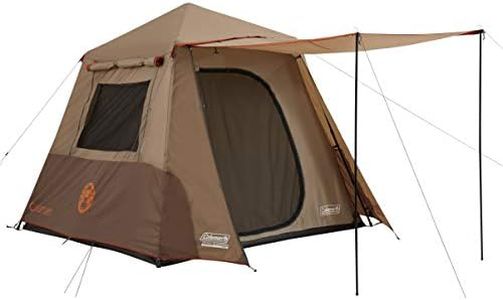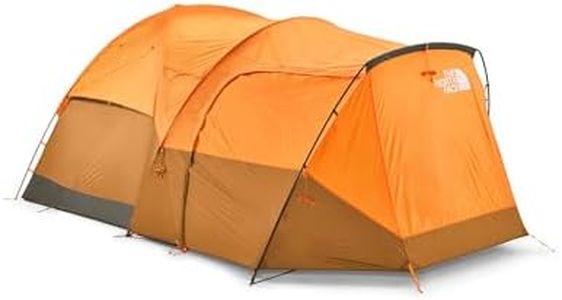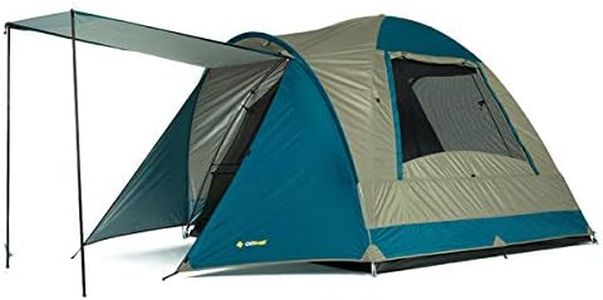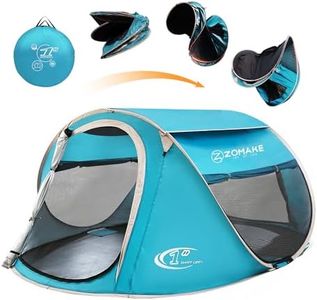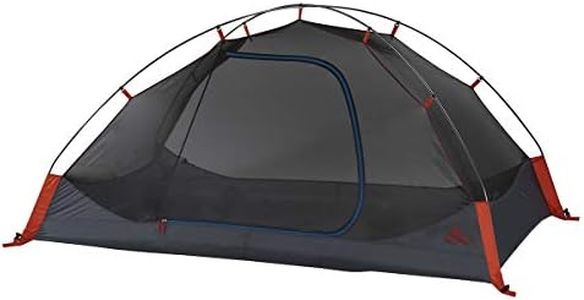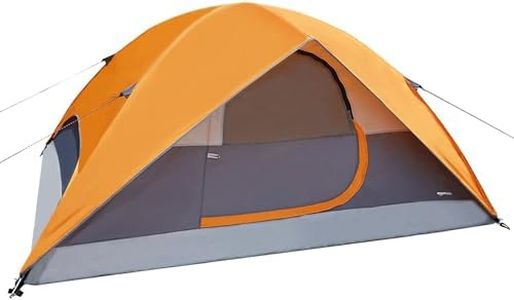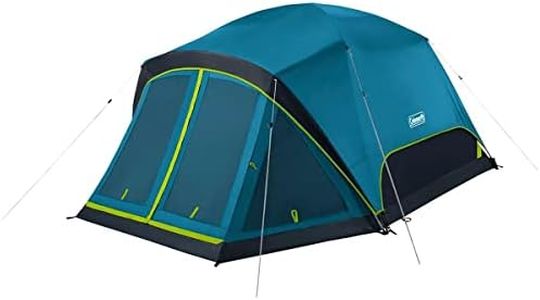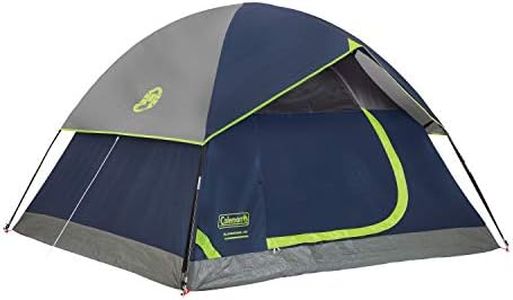We Use CookiesWe use cookies to enhance the security, performance,
functionality and for analytical and promotional activities. By continuing to browse this site you
are agreeing to our privacy policy
10 Best 4 Person Tents
From leading brands and best sellers available on the web.Buying Guide for the Best 4 Person Tents
Choosing a 4-person tent is all about understanding how you plan to use it and what features will comfortably suit your group. Think carefully about the type of trips you’ll take, the kind of weather you expect, and how much space and convenience you need. Exploring the main features will help you match a tent to your trip style, whether it's car camping with family or going on a short hiking adventure with friends.Tent Size (Floor Dimensions and Peak Height)The floor dimensions and the peak height determine how much space you get inside. Floor dimensions tell you the length and width, while peak height measures how tall the tent is at its highest point. Larger dimensions allow for more sleeping and gear storage space, and higher peak height makes it easier to stand or sit up inside. If you value moving comfortably or fitting large air mattresses, choose a tent with a more generous layout and height. For backpacking or situations where every bit of weight and size matters, go for more compact options; but for family or leisure camping, a roomier tent adds a lot of comfort.
WeightWeight matters mostly if you need to carry the tent for longer distances, such as during hikes. Lighter tents are easier to transport but might sacrifice some comfort, space, or durability. Heavier tents are more suitable for car camping where carrying isn't a concern, and they often provide more room and sturdier build quality. Consider how far you’ll need to carry your tent—if you’ll park near your campsite, weight is less of an issue; if you have to hike in, a lighter tent is better.
SeasonalitySeasonality refers to the type of weather conditions the tent can handle, like 3-season, 3-4 season, or 4-season tents. A 3-season tent is great for spring, summer, and fall, balancing ventilation and protection from rain. 3-4 season tents handle a bit more wind and some light snow, while true 4-season tents are meant for winter and harsh conditions. Pick a tent seasonality based on when and where you'll camp most often: for general camping in mild weather, a 3-season tent is usually best; for colder or more unpredictable conditions, consider more robust options.
Setup Type (Freestanding or Non-Freestanding)Freestanding tents can stand on their own without being staked down, which makes them easier and quicker to set up and move around. Non-freestanding tents require stakes and sometimes extra support, so they take a bit more time and skill to pitch, but are often lighter and more compact. If you’re new to camping or want quick, hassle-free setup, go with a freestanding tent. If saving weight is vital or you’re comfortable with more complex setup, a non-freestanding model can be a good pick.
Weather Protection (Rainfly and Waterproof Rating)Good weather protection is about keeping you dry and comfortable. A full-coverage rainfly shields the tent from rain, while the waterproof rating (measured in millimeters) tells you how well the fabric resists water. Higher numbers mean better waterproofing. For most users, a decent quality rainfly and moderate waterproof rating are enough for typical rainfall, but if you often camp in heavy rain, look for higher ratings and more coverage.
VentilationVentilation affects how much fresh air flows through the tent and how well it manages condensation inside. Features like mesh panels, vents, and multiple doors allow for better airflow. Less ventilation can make the tent stuffy and damp inside, while more can keep you cooler and more comfortable. If you camp in hot or humid climates, prioritize tents with plenty of mesh and vent openings; in colder areas, balance ventilation with warmth.
Doors and VestibulesDoors and vestibules play a big role in convenience and storage. More doors mean less crawling over each other to get in and out, which is helpful for groups. Vestibules are covered spaces outside the main sleeping area where you can keep shoes, packs, or wet gear. For more comfort and better organization, look for tents with at least two doors and spacious vestibules, especially if you have a lot of gear or want easy nighttime exits.
Durability (Materials and Construction)Durability is influenced by the materials (like thicker fabrics and sturdy poles) and overall build quality. Durable tents resist wear, winds, and rough use better, but can be heavier. If you plan on lots of trips or camping in more rugged conditions, invest in a tent built for repeated use. For occasional or gentle camping, lighter, less robust materials may suffice.
